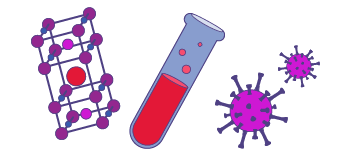This includes Carbon, Chlorine, Lithium, Phosphorous and Sodium MRI.
Carbon (13C) MRI at the MagLab utilizes high magnetic fields to improve the sensitivity of detecting metabolic processes in vivo and in vitro. By focusing on either the direct or indirect detection of the 13C isotope, this technique can be used to map metabolic turnover (e.g., during the TCA cycle) and/or energy production within a given tissue, both in living animals and cellular/tissue preparations. As such, the technique can provide direct assessments of viability, activity and metabolism. Coupled with techniques under development (such as hyperpolarization), 13C MRI at high field can provide unique and highly sensitive means of interrogating function and energetics in living tissue.
In Tallahassee:
In Gainesville:
For 600 MHz NMR Magnet
For 750 MHz NMR Magnet
For more information, please contact Sam Grant (Tallahassee) or Glenn Walter (Gainesville).
MR imaging of low gamma nuclei at the ultra-high magnetic field of 21.1T provides a new opportunity for understanding a variety of biological processes. Among these, chlorine and sodium (see below) are attracting attention for their involvement in brain function and cancer development. Experiments are conducted using Bruker Avance III console with PV5.1 software. MR imaging and the measurement of relaxation times for 35Cl and 23Na can be accomplished in vivo in rat head using in vivo probe, custom designed at the MagLab. The probe allows performing experiments using a single tuned chlorine radio-frequency (RF) coil tuned for 88.15 MHz or double tuned sodium/proton RF coil (237.5/900 MHz). The inner diameter of the RF coils is 33 mm. A similar birdcage design of the chlorine and sodium coils facilitates comparison of MR signal intensities. The recommended weight of the rat is under 300 g. The concentrations of both nuclei can be evaluated using the center-out back-projection MR imaging methods.
The following instruments can be used with this technique:
The following probes can be used with this technique:
For more information, please contact Sam Grant.
The following instruments can be used with this technique:
This following probe can be used with this technique:
For more information, please contact Sam Grant.
The following instruments can be used with this technique:
For more information, please contact Sam Grant or Glenn Walter.
The following instruments can be used with this technique:
This following probe can be used with this technique:
For more information, please contact Sam Grant.

Explore our magnet schedule to see what exciting research is happening on our stellar fleet of instruments right now.
Last modified on 02 December 2025